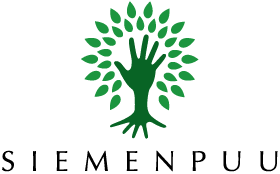Seminar on carbon-rich ecosystems, local communities and global warming, organized by the Siemenpuu Foundation.
Time: Thursday, 26 October 2017 at 9.00 – 12.15
Venue: Auditorium of Lintulahdenkulma (Lintulahdenkatu 10), Helsinki
PROGRAMME
9:00 – 9:15 Opening / Toni Haapanen (Programme Coordinator, Siemenpuu Foundation)
9:15 – 9:50 Rahman Dako (Founder of JAPESDA Gorontalo, Indonesia), VoIP/video participation: Mangrove forests and their significance for the climate and coastal communities in Sulawesi, Indonesia
9:50 – 10:10 Risto Isomäki (author, science writer): Protecting 30 per cent of the ocean – the most important nature conservation initiative in human history
10:10 – 10:30 Jessica Haapkylä (PhD in Marine Biology, freelance science writer): Seagrass meadows and coral reefs: the lifeline of 500 million people
10:30 – 10:50 Otto Miettinen (PhD, Finnish Museum of Natural History, Botany Unit): Peat swamp forests and global warming
Coffee break
Comments: The way forward?
11:00 – 11:15 Anu Lounela (PhD, Social and Cultural Anthropology, University of Helsinki)
11:15 – 11:30 Matti Nummelin (Senior Adviser, Development Policy, Foreign Ministry of Finland)
11:30 – 12:10 Discussion
12:10 – 12:15 Closing (Toni Haapanen)
—————————————————–
In the tropics three coastal ecosystems are especially important for the stability of the world’s climate and for the livelihoods of at least 500 million people.
The remaining tropical peat swamp forests probably contain 80 – 100 billion, the mangrove swamps something like 20 billion and the seagrass meadows 20 – 50 billion tons of organic carbon. These vast organic carbon stores exist on a very small area of land and water, amounting to 50 – 80 million hectares, only, a little bit more than one thousandth of the Earth’s total surface area. If these ecosystems are destroyed, they will release a vast amount of carbon dioxide into the atmosphere, equivalent to 15 – 20 years of anthropogenic emissions from fossil fuels.
Indonesia is situated in the centre of global marine biodiversity. The livelihood and safety of countless human communities and at least 500 million people living in the world’s coastal areas depend on coral reefs, mangroves and seagrass meadows. Mangroves and seagrass meadows are significant breeding grounds, nurseries and foraging grounds of most economically and nutritionally important tropical fish and invertebrate species found on coral reefs. The protection of mangrove and peat swamp forests is also crucial for the survival of coral reefs.
For these reasons, it is extremely worrying that these four ecosystems are disappearing with a faster speed than any other ecosystems on Earth. Peat swamp forests are being wiped out with the speed of 2 per cent, seagrass meadows with the speed of 7 per cent and mangroves with the speed of 2 – 8 per cent per year. At the same time, the great majority of the world’s coral reefs could disappear by 2050 due to global warming, ocean acidification, coastal development and pollution.
We urgently need to pay more attention to these critically endangered but vitally important ecosystems, especially seagrass meadows, which have this far been the real Cinderella of nature conservation. In spite of their superior importance for climate, biodiversity and as the breeding grounds of tropical fish species, seagrass meadows are the least well-known, critically important ecosystem in the world. Even most environmentalists have never heard anything about them.
This seminar aims to highlight the importance of saving these fragile, intertwined and highly important ecosystems, and seek sustainable solutions where local communities can have ownership and diverse benefits. Also the work and achievements of the civil society organizations supported by the Siemenpuu Foundation in Indonesia are presented through examples of the environments and political contexts in which they operate.
See also the facebook event page.
